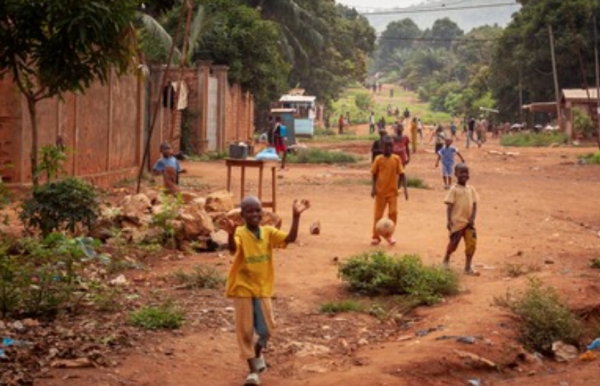The Humanitarian Needs Overview is part of the Global Humanitarian Overview, a series of annual reports published by the United Nations Office for the Coordination of Humanitarian Affairs. The aim of the analysis is to collect data and information on the humanitarian needs and emergencies of populations around the world in order to develop and ensure adequate funding plans. The cross-sectoral approach of the analysis identifies the multidimensional nature of people's needs across all sectors; therefore, understanding the complex picture, the main objective of the report is to consolidate and organize joint planning for a strategic response.
This Humanitarian Needs Overview focuses on the Central African Republic and the strategic health care plan needed. Thanks to the latest report conducted on the region, it was possible to develop a multi-sector aid project that provided assistance to 1.5 million people in the first nine months of 2022. Despite the huge plan developed in 2022, due to the uncertain security context, the region needs further humanitarian aid to face the growing food crisis and improve the precarious hygienic conditions.
According to the 2023 report, 3.4 million people are in need of urgent health care and protection, a sharp increase from the 3.1 million a year earlier. The figure corresponds to 56% of the population currently in conditions of food insecurity and growing vulnerability - physical and mental - given the context of surrounding violence. Due to constant armed conflicts and urban warfare, many people are forced to move continuously. There are currently almost half a million internally displaced persons (IDPs) in the country; among these over 60% have been forced into this precarious condition for over two years and a third of them for over four years.
Among the displaced people in the country and the population most at risk, the sectors that most require assistance are: hygiene, sanitation, and the growing demand for drinking water. These three emergencies are strongly marked among the vast number of people constantly on the move within the country, but also among host families - families hosting internally displaced people or refugees - weak and precarious health conditions are recorded.
Among the sections of the population most affected by the growing instability in the country, children are most at risk every year. According to the report, in the first half of 2022, 10% of children attending elementary school had to drop out of school. Outside the protection and control guaranteed by school structures, children are more at risk of child exploitation and sexual violence; furthermore, boys are more at risk of being forcibly recruited by armed groups present in the area instead girls of being forced into arranged marriages and therefore to incur unwanted and early pregnancies.
In addition to children, due to the continuous conflicts between armed groups, women in unstable contexts are also highly at risk of suffering sexual violence. Furthermore, pregnant women in vacillating and precarious hygienic and sanitary conditions risk not being able to complete the pregnancy period or incurring various diseases that can seriously endanger the life of the fetus and of the woman herself.
In conclusion, the constant economic and political instability and the continuous clashes between the conflicting armed groups in the Central African Republic continue to deteriorate the internal situation in the country. According to the Humanitarian Needs Overview, a new multi-sector aid plan is needed to face the new challenges posed in 2023. Inside the country, the number of displaced people is steadily increasing, reaching almost half a million people. The hygiene and health conditions of the displaced population and the most vulnerable population require a huge aid plan. Furthermore, the insecurity of the territory also puts at risk the safety of children and women, who are more exposed to sexual violence. According to the report, compared to 2022, the number of people in 2023 who are in need of vital humanitarian assistance has increased to 3.4 million.
Original report available here:
By Federica Tognolli







